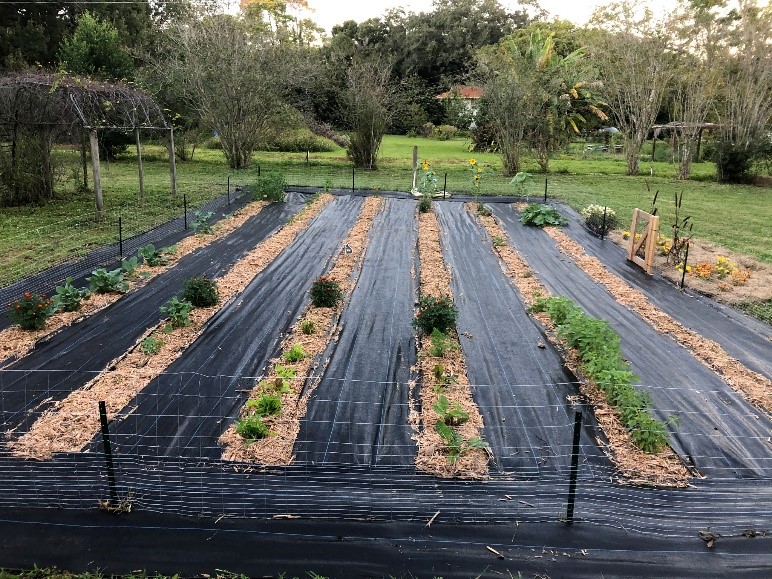As we are spending more time at home, many of us now have the time and opportunity to plant our home gardens. Below is advice from the professional horticulturalists and gardeners of MREC.
Advice from Annette Chandler:
A garden doesn’t have to be big. I just wanted a few plants of tomatoes, green beans, squash, peppers and cucumbers. I found a small area by my A/C hidden from the road. On my patio, I grow herbs year-round.


Advice from Brandon White:
- Read the ‘Florida Vegetable Gardening Guide’ EDIS publication http://edis.ifas.ufl.edu/vh021
- If you find you’re are asking yourself if your compost has enough bat guano in it, you’ve gone too far! Like most things, there is a ton of info out there about how to grow a garden and that can make it overwhelming if you let it. I would use the above reference as a guide to get started but remember to ‘baby step’ into it keeping in mind that at the end of the day seeds/plants do a lot on their own. You are just there to assist. Focus on the basics to get started: seeds + water + sunlight + a little added nutrients (fertilizer) = a productive plant. Good soil and proper watering go a long way. If you focus too much on the right timing, plant variety, garden location, etc. you’re likely to end up frustrated staring at a barren backyard eating a bagged salad pondering your next hobby or doomsday plan! Have fun with it!


Advice from Terri Mellich:
- Location: Most vegetables require full sun and remember in the winter the sun is low in the southern sky so make sure your cool season vegetables are not shaded by trees to the south of your vegetable bed.
- Timing: There are cool and warm season vegetables. Plant your vegetables at the appropriate time of year
- Seeds vs Plants: Buy seeds so that you can choose seeds that are suitable for your area.
- Soil: If the soil is very sandy add some Black Cow or mushroom farm compost at a rate of 50% sand and 50% Black Cow or mushroom farm compost. You only have to till it into the top 4 inches of soil.
- Fertilizer: Use a slow release fertilizer like Osmocote.
- Irrigate: Always try to irrigate in the morning so the foliage does not stay wet too long. This helps to prevent disease.
It is not hard … just takes a little research and planning.
Advice from Carmen Nazario:
It’s been a few years for me, but I started with a plant pot to start cherry tomatoes just to see if I even had a green thumb instead of wasting funds on seeds and other materials. Once I was able to do something as simple as cherry tomatoes, I went on to a large pot of green peas, that worked nicely. I have right now am planting seeds for multi colored peppers like green, yellow and orange.
Advice from Dr. Liz Felter and Dr. Catherine Campbell:
Remember that Florida has two vegetable garden seasons, a spring (March 20 – May 20) and fall (September 20 – it’s too cold) season. Since we are halfway through the first gardening season, purchasing vegetables in a 4” pot may provide a way to still access vegetables.
Make sure to stay tuned for more home gardening resources from the Sustainable Home Food initiative.
 0
0
